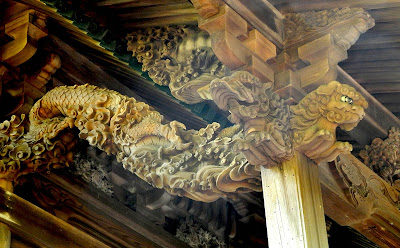Japan's top Meizan would be less crowded if everyone started their climbs from the mountain's foot.
This brings Shizuoka into line with Yamanashi Prefecture, on the mountain’s eastern side. Yamanashi’s officials had already decided to double their existing climbing fee to ¥4,000 from the summer of 2025.
However, Shizuoka will not attempt to limit the number of climbers using its trails at any one time. By contrast, Yamanashi Prefecture seeks to limit the number of climbers on its popular Yoshida route to 4,000 climbers a day, although it’s not clear if it has yet applied this restriction in practice.
Both prefectures will attempt to deter “bullet climbers”- those who try to climb the mountain in one all-night push – by requiring climbers to have booked a hut if they start up the mountain between 2pm and 3am. Again, it’s unclear how this policy will be enforced.
If 90,000 people climb Mount Fuji from the Shizuoka side, as expected in the coming summer, the increased fee could raise just under ¥400 million, the Nikkei has reported. The money will fund staff to collect and manage the fees at each trailhead, provide multilingual guidance for tourists, and provide safety and environmental measures. But will it solve the problem of overcrowding on the mountain trails?
When Yamanashi introduced its climbing fee and other measures last year, the prefecture’s governor, Nagasaki Kotarō, said they were intended to curb “overtourism”. In the past, Nagasaki has also flirted with the idea of converting the Subaru Line road to the mountain’s fifth station into a light railway. This, he thought, would allow the authorities to better control visitor numbers.
Governor Nagasaki is probably thinking along the right lines – as a climbing fee alone is unlikely to curb visitor numbers, it might be more effective to restrict access to the mountain. But would a light railway make enough of a difference? Perhaps a more effective solution is to abolish all forms of transport – whether road or rail – to the mountain’s various fifth stations?
The aim would be to “rewild” Mt Fuji – or, at least, restore the mountain to its status before the first access road was built in 1964. Would-be climbers would then start low down the mountain – for example, at Fuji-Yoshida’s railway station (809 metres) rather than the terminus of the Subaru Line road at 2,300 metres. Or at the JR station at Fujinomiya (121 metres) rather than the Fujisan Skyline’s carpark at 2,400 metres.
You’d keep the roads, of course, but reserve them for rescue vehicles and supply trucks to the mountain huts and teahouses. A longer climb for would-be summiteers would thin the crowds, and generate new business for restored huts and teahouses further down the mountain. Meanwhile, Mt Fuji’s famous forests would get some relief from diesel fumes.
Rewilding should also solve the problem of “bullet climbing”. After all, few have the stamina to do an all-night push through more than two or even three vertical kilometres…
It would be the climbers themselves who would stand to gain most. Instead of experiencing Mt Fuji as an overcrowded, clapped-out Instagram destination, they’d start off through those dignified old-growth forests at the mountain’s base and come out above the clouds through their own efforts. Along the way, they'd rediscover the rewilded Mt Fuji as a real mountain.
References
Asahi Shimbun (English edition), “Shizuoka joins Yamanashi to charge 4,000 yen for Mt. Fuji climb”, 18 March 2025.
Nikkei Shimbun, 静岡県、富士山入山料は4000円軸来夏から初導入, 13 December 2024.
Rewilding should also solve the problem of “bullet climbing”. After all, few have the stamina to do an all-night push through more than two or even three vertical kilometres…
It would be the climbers themselves who would stand to gain most. Instead of experiencing Mt Fuji as an overcrowded, clapped-out Instagram destination, they’d start off through those dignified old-growth forests at the mountain’s base and come out above the clouds through their own efforts. Along the way, they'd rediscover the rewilded Mt Fuji as a real mountain.
References
Asahi Shimbun (English edition), “Shizuoka joins Yamanashi to charge 4,000 yen for Mt. Fuji climb”, 18 March 2025.
Nikkei Shimbun, 静岡県、富士山入山料は4000円軸来夏から初導入, 13 December 2024.

















